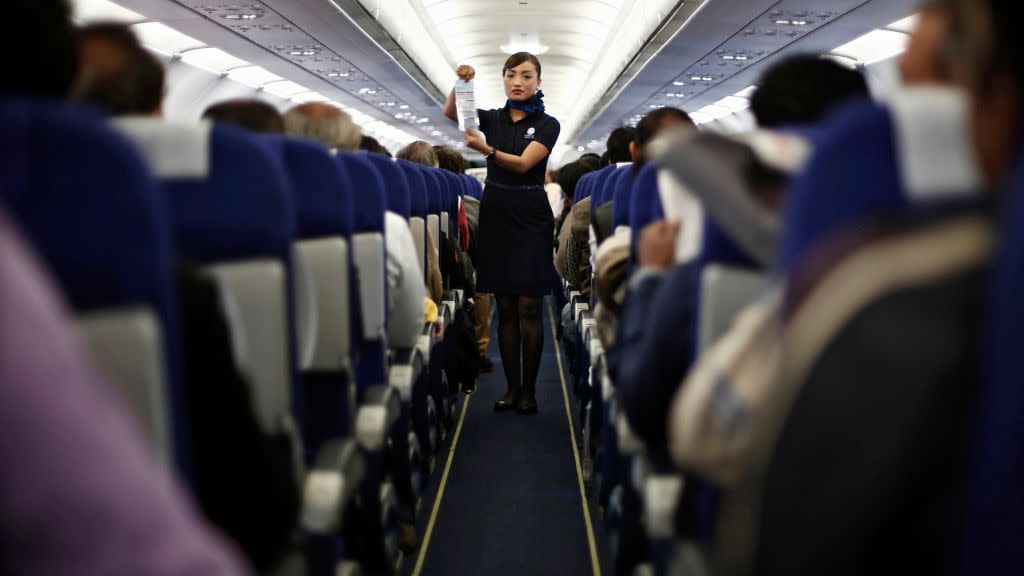The health risks of ultra-long-haul flights

If all goes to plan, you might be able to make an uninterrupted, 20-hour flight from London or New York to Sydney as soon as October. Qantas, the Australian national airline, is trialing “ghost flights” with 40 passengers and crew.
We're embarking on three research flights to help plan how we care for passengers & crew on future long-haul flights. New #787Dreamliners will fly non-stop flights from #NYC & #London to #Sydney, fully carbon-offset with only 40 people onboard. Read more: https://t.co/OtddNYWQMD pic.twitter.com/JDzHYegkzU
— Qantas (@Qantas) August 21, 2019
It’s a question of the comfort and wellbeing of passengers and crew, Qantas Group CEO Alan Joyce said in an airline statement: “For customers, the key will be minimizing jet lag and creating an environment where they are looking forward to a restful, enjoyable flight. For crew, it’s about using scientific research to determine the best opportunities to promote alertness when they are on duty and maximize rest during their down time on these flights.” Electroencephalogram (EEG) devices will track pilots’ brainwave patterns and monitor alertness. After hitting the tarmac, other test subjects will undergo a variety of medical checks and assessments.
If approved, these will be the longest flights in the world, outstripping Singapore Airlines’ current 17-hour Singapore to New York schlep.
But what are the risks of ultra-long-haul flights, and are there things passengers can do to prevent them?
Dehydration
Cabin-air humidity is usually less than 20%—on a par with the Mojave Desert in California and dryer than the Sahara. Super-dry air, with reduced oxygen, makes it all too easy for dehydration to set in. Sipping on coffee or alcoholic beverages, which are diuretics, exacerbate the problem. On short flights of three or four hours, most people don’t suffer too much. Once you get into long-haul territory, however, serious fluid loss begins to set in. In a 10-hour flight, the average woman might lose 1.6 liters of water (just under half a gallon), with men losing about 25% more.
In worst-case scenarios, dehydration can cause death. That’s pretty unlikely, even on an ultra-long-haul flight. But less sinister effects, including irritability, fatigue, and attention deficit, are pretty much par for the course. Dehydration also dries out the body’s mucous membranes, making it harder for them to prevent bacterial or viral infections.
What to do
Hydrate before you get on the plane, then drink lots of water throughout your flight. Avoid the seductive call of any free booze and try to remember to pick up a bottle of water after you’ve gone through security.
Infection
Those dried-out mucous membranes don’t do you any favors amid the coughing and spluttering of other passengers. Take comfort in the fact that recirculating air on a plane actually isn’t more likely to make you sick—though if you’re in close proximity to someone with a runny nose for 16 or 19 hours at a time, you’re definitely at a higher risk.
What to do
Though planes are (usually) well cleaned after flights, there’s no harm in wiping down surfaces such as seatbelt buckles, tray tables, and bathrooms before you use them. Hand sanitizer is your friend, as are regular hand washes.
Deep vein thrombosis
DVT, as it’s sometimes known, is a blood clot that forms in a vein deep in the body, often in the lower leg or thigh. Some passengers may be more prone to DVT, including those who have a family history of the condition, are overweight, have recently been pregnant, take the oral contraceptive pill, or have spent a lot of time on bed rest. (Here are other risk factors.) The longer the flight, the greater the risk—especially if you don’t move for long periods of time.
What to do
The best way to avoid DVT is to factor in regular walks around the cabin—as often as every two hours. If you don’t feel comfortable disturbing your neighbor, even lifting your feet off the floor and making small circles with your ankles can help. Compression stockings are also a useful tool—and great for vanity purposes, if you’re prone to swelling.
Radiation
Every time you fly, you’re exposed to cosmic ionizing radiation from space, which has been linked to cancer and reproductive problems by the World Health Organization. For most occasional passengers, it’s not really a consideration. Pilots and crew members, however, are exposed to so much radiation that they’re officially considered radiation workers by the US Centers for Disease Control, with the largest average annual effective dose of all American radiation-exposed workers.
One domestic US coast-to-coast flight exposes each passenger to about 0.035 mSv (3.5 mrem) of cosmic radiation, or less than a single chest x-ray—so, unless you’re flying almost every day, it isn’t really worth worrying about.
What to do
If you are a pregnant member of cabin crew, consider schedule-switching to avoid ultra-long-haul flights, very high latitude flights, or flights over the poles. During solar-particle events, sometimes known as solar flares, radiation is especially high—though these are unusual, and often hard to plan around.
Medical emergencies
Sign up for the Quartz Daily Brief, our free daily newsletter with the world’s most important and interesting news.
More stories from Quartz:

